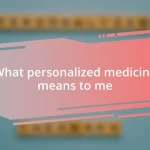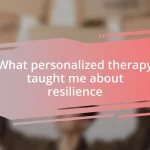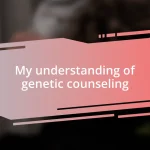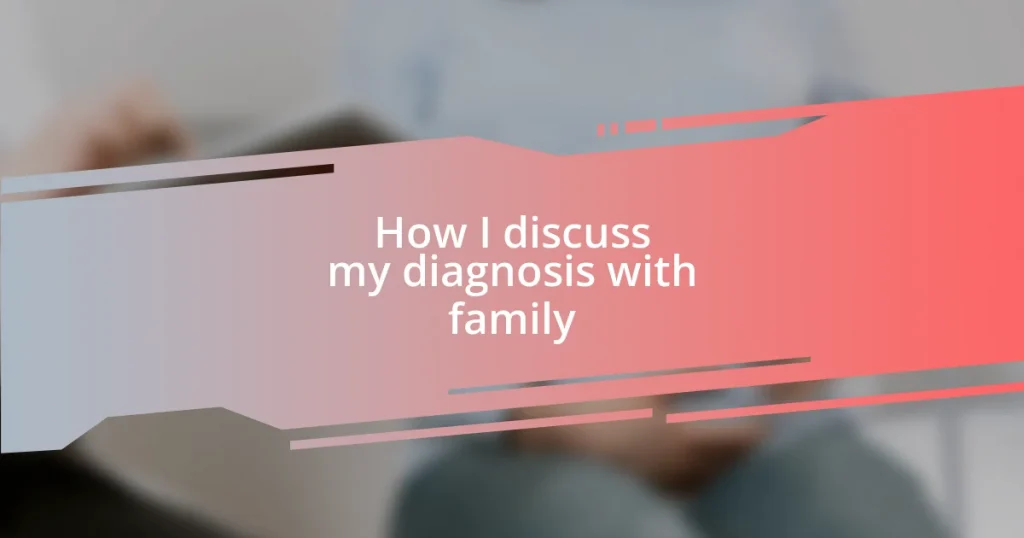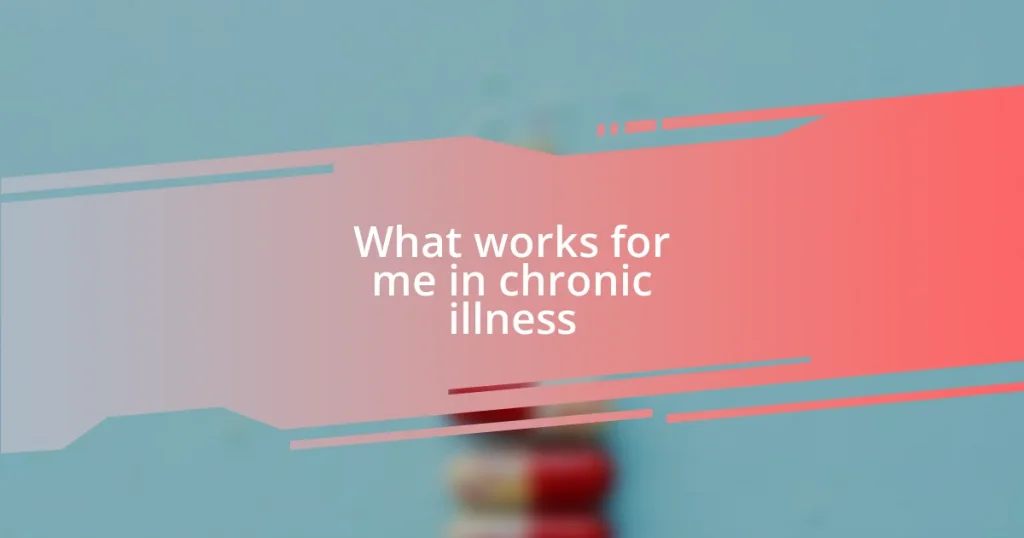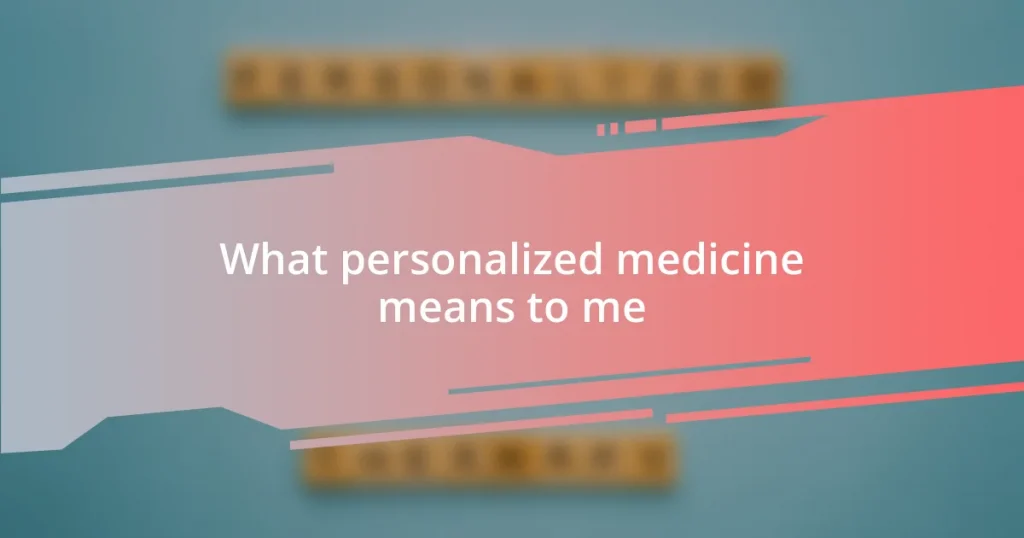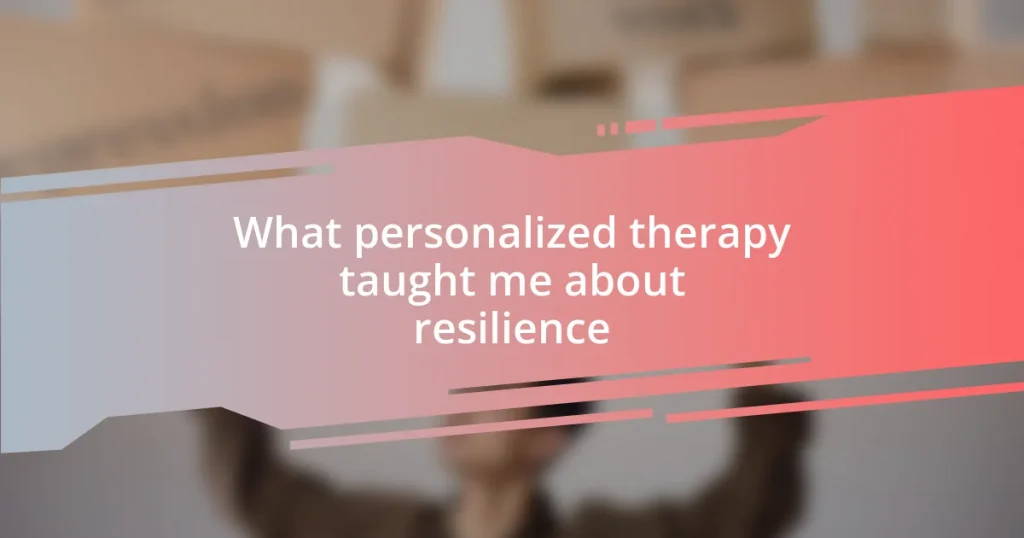Key takeaways:
- Break down complex medical information into relatable terms to facilitate understanding and support among family members.
- Choose the right time and setting for discussions, ensuring emotional readiness and a calm atmosphere for open dialogue.
- Encourage open-ended questions and follow-up conversations to foster emotional honesty and maintain connection over time.
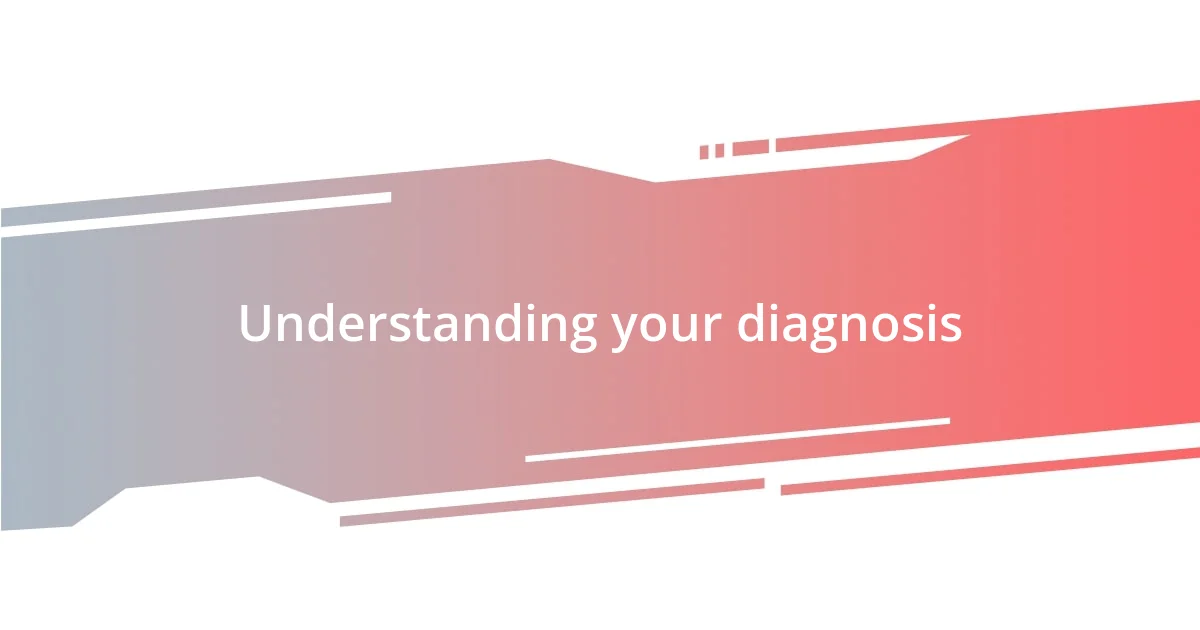
Understanding your diagnosis
Understanding your diagnosis is an essential first step in navigating this journey. When I received my diagnosis, I felt an overwhelming wave of emotions—confusion, fear, and a strange sense of relief all collided at once. How could I possibly explain this complex medical jargon to my family, who clearly had their own anxieties to deal with?
I found it helpful to break down the information into manageable pieces. For instance, instead of overwhelming them with all the details at once, I shared simple, relatable explanations, like comparing my condition to a well-known experience, such as having a chronic cold but with a twist. It transformed a potentially frightening conversation into something that felt accessible and less daunting. Isn’t it empowering to realize that understanding your diagnosis could be the bridge to a more supportive discussion with loved ones?
As I delved deeper into my condition, I discovered the importance of addressing my feelings openly. I remember sitting down with my family and sharing not just the facts but also my fears and hopes. I asked them about their thoughts as I explained my diagnosis, which opened up a dialogue that brought us closer together. Isn’t it fascinating how vulnerability can foster connection?
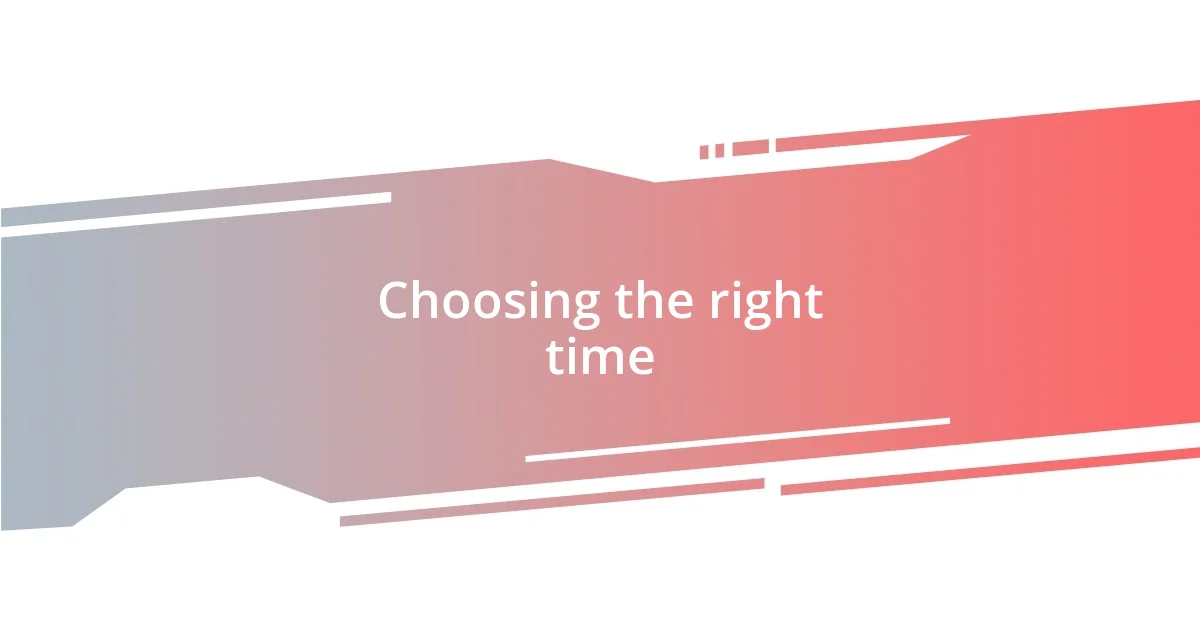
Choosing the right time
Choosing the right moment to discuss your diagnosis is crucial. I remember waiting for a quiet evening when everyone was gathered in the living room. It felt right, as the comforting atmosphere allowed me to share my news in a way that was thoughtful and calm. I find that timing can significantly influence how the conversation unfolds, making it easier for everyone to engage.
Consider the context; if there’s already stress in the family, it might be wise to wait for a more stable time. For example, I once chose to avoid discussing my diagnosis during a family gathering when tensions were running high due to an unrelated issue. Reflecting on that experience, I realized that creating a peaceful setting helped my family be more receptive to what I had to share. Timing is everything, and I always remind myself to choose moments when emotions are balanced.
Another approach is to ask open-ended questions about their day or feelings before launching into your experience. This way, I noticed that they were already in a thoughtful frame of mind, prepared to listen and engage. The right time can transform a tough discussion into a moment of mutual support. We’re all navigating our emotions; helping them feel comfortable might just lead to a more heartfelt dialogue.
| Factors to Consider | Examples |
|---|---|
| Family Mood | Quiet evening vs. hectic gathering |
| Current Events | Avoid during stressful times |
| Setting | A cozy living room vs. a busy restaurant |
| Emotional Readiness | Engaged in a good conversation vs. distracted |
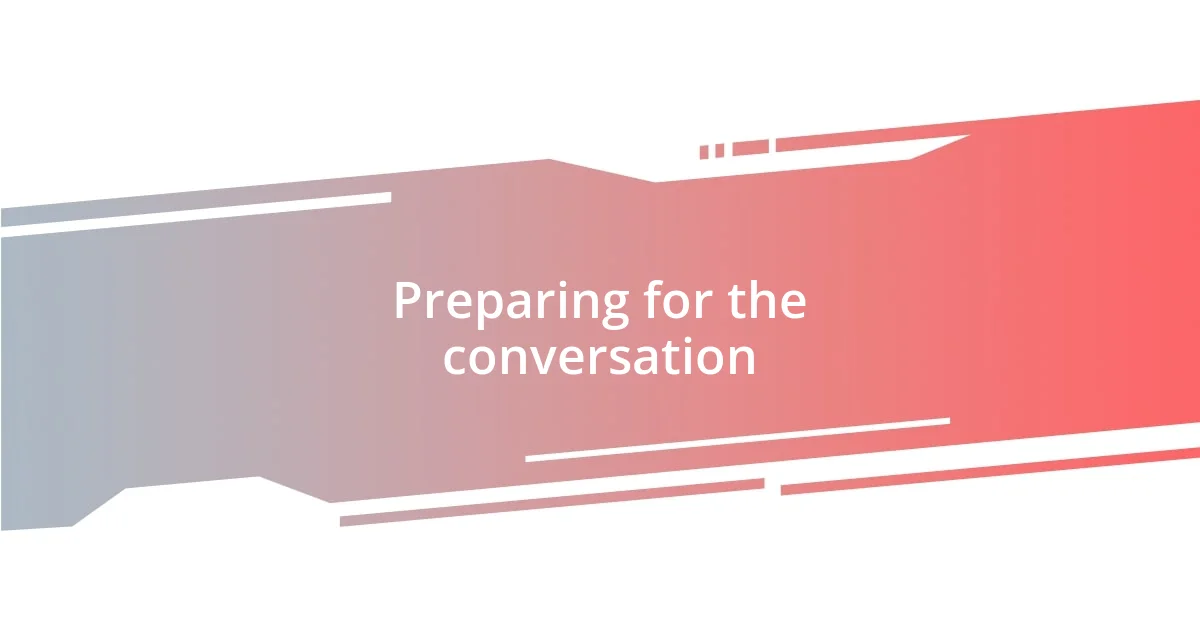
Preparing for the conversation
When preparing for the conversation about my diagnosis, I found that gathering my thoughts beforehand was essential. I jotted down key points I wanted to cover, ensuring I didn’t forget anything important. It felt like I was arming myself with knowledge, which made me more confident. I remember the sense of calm washing over me as I rehearsed what I wanted to say, visualizing how my family might react. That exercise made me feel ready for a meaningful dialogue rather than a mere disclosure.
To help create a supportive environment, consider these points as you prepare:
- Clarify Your Goals: Think about what you want to achieve from the conversation—understanding, support, or just sharing.
- Choose Talking Points: Outline the main points you want to address, keeping them simple and clear.
- Anticipate Questions: Be ready for their questions or concerns; this shows you value their input and encourages open dialogue.
- Emotional Preparation: Acknowledge your feelings and be prepared for their reactions, as these emotions will likely surface.
- Practice Active Listening: It’s important to listen as much as you speak; their perspective is just as valuable.
I recall feeling nervous as I sketched an outline of the conversation, yet as I visualized it, I realized this was also a way to show my family that I was serious about sharing my experience. The process itself became a comforting ritual, transforming my anxiety into a sense of purpose. With each point written, I felt a little lighter, ready to navigate the emotional landscape ahead.
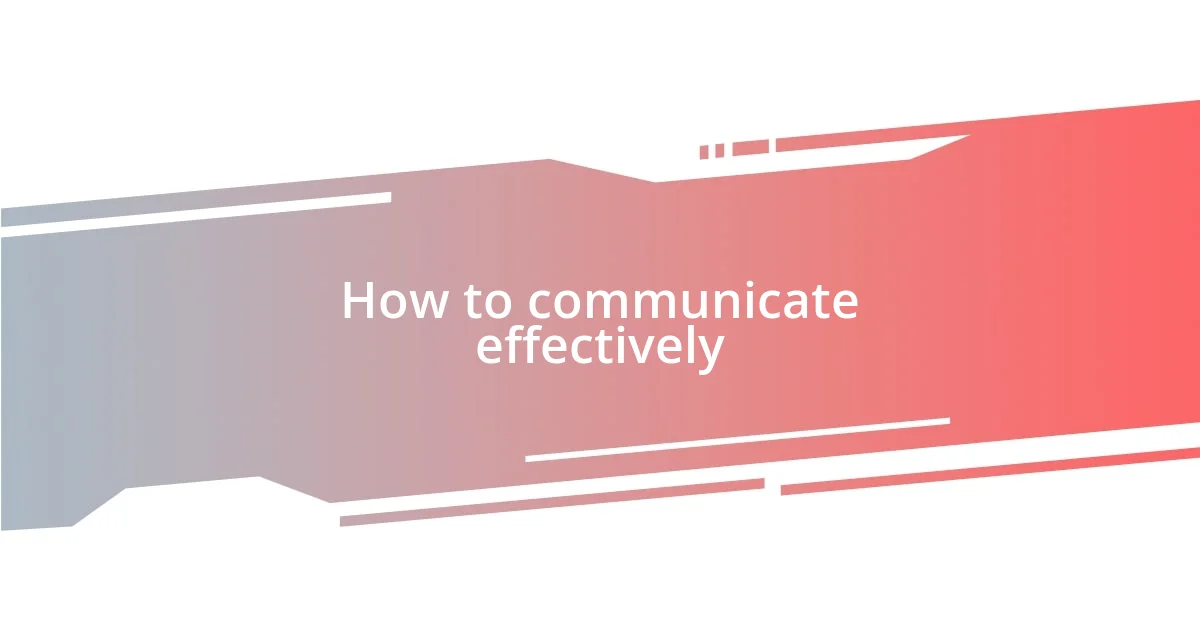
How to communicate effectively
Effective communication about your diagnosis hinges on the clarity of your message. I’ve learned that using simple language can make a significant difference, especially when emotions run high. One time, I tried to explain my condition using medical jargon, and I could see the confusion on my family’s faces. It hit me then that while I understood the terms, they didn’t. By choosing straightforward words, I not only made it easier for them to grasp my experience but also fostered a more open dialogue. Have you ever found yourself lost in your own words? Simplifying them can be a game-changer.
Another aspect to consider is the non-verbal cues you and your family members exhibit during the conversation. I remember sitting on a cozy couch, one of them leaning in to hear more while another looked down, lost in thought. That moment taught me to be vigilant about body language. It can reveal a lot about how the conversation is being received. If someone seems withdrawn, it’s sometimes best to pause, ask how they’re feeling, and give them space. Adapting my approach based on those signals allowed me to create a more compassionate exchange.
Listening is equally vital. I made it a point to really hear what my family had to say, acknowledging their questions and emotions as we talked. After all, isn’t it a two-way street? By inviting them to express their feelings, I noticed a shift from just relaying information to a shared experience. When one family member broke down in tears, it reminded me that my journey affected everyone, and it was okay to lean on each other. Engaging in this empathetic back-and-forth made the conversation not just about me, but about us navigating this together. Reflecting on those moments, I can’t help but wonder—how can each of us foster deeper connections during tough conversations?
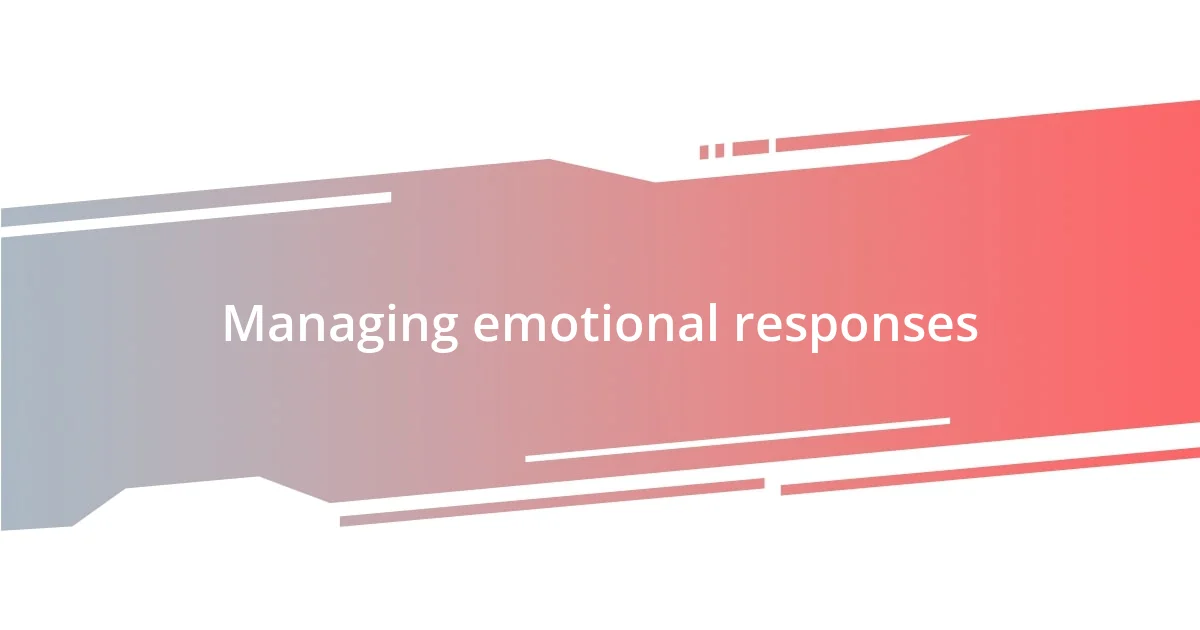
Managing emotional responses
When I first broached the subject of my diagnosis with my family, I couldn’t help but feel their emotions seep into the room. I noticed my mother’s brow furrowed as she tried to process the news. It struck me how different everyone’s initial reactions can be. I’ve realized that managing those emotions is just as crucial as sharing my own story. Taking a moment to breathe before responding to their worried expressions created a bridge of understanding. Have you ever paused to let emotions settle before diving back in?
During one conversation, I felt overwhelmed by my father’s silence—his somber demeanor was suffocating. I decided to gently encourage him to share what he was feeling. This opened a door, and his fears poured out, revealing that he too was grappling with the reality of my condition. I learned that by inviting them to express their feelings, I not only eased my own anxiety but created a safe space for them to process their emotions. Isn’t it fascinating how vulnerability can rally your loved ones?
I also found that sharing specific moments related to my diagnosis helped ground our conversation. For instance, when I spoke about a particularly tough day I experienced, I could see my sister’s empathetic expression shift to concern. It created a moment of connection; we weren’t just discussing my health, but sharing in the challenges together. By making my experience relatable, I encouraged them to voice their own fears and worries. Isn’t it powerful when personal stories bridge the gap between us?
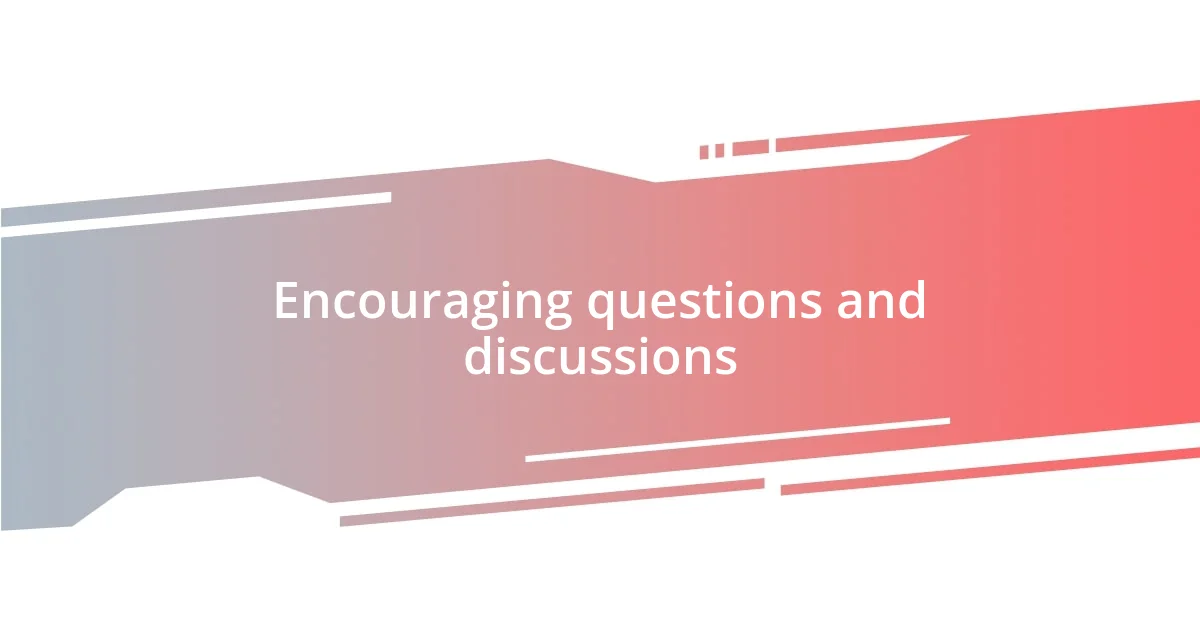
Encouraging questions and discussions
The heart of encouraging meaningful discussions lies in asking open-ended questions. One evening, I gathered with my family around the dinner table and simply asked, “What are your biggest concerns about my diagnosis?” To my surprise, this one question opened a floodgate of thoughts and emotions. It prompted my brother to share his fears about the future, while my sister expressed her worries about being supportive. I realized that allowing them to voice their concerns not only made them feel heard but also fostered a deeper connection between us.
Another strategy I found effective was to ask them what they wanted to understand more clearly about my condition. One time, my aunt responded with, “How does this affect your everyday life?” That question led to an enlightening discussion about my daily struggles, and suddenly, my experience was no longer an abstract concept. It was real and relatable. This interaction reminded me how vital it is to create a safe space where family members can explore their curiosity without fear of judgment. Have you ever noticed how curiosity can spark healing discussions?
Lastly, it’s essential to check in with your loved ones throughout the conversation. After sharing a particularly intense moment from my journey, I paused and asked my dad how he felt about it all. His response was heartfelt and raw, which opened the door for more emotional honesty. It reinforced my belief that following up with questions not only deepens our understanding of each other but also reinforces the bond we share in the face of challenges. Doesn’t it feel liberating to let the conversation flow naturally, allowing space for each other’s feelings?
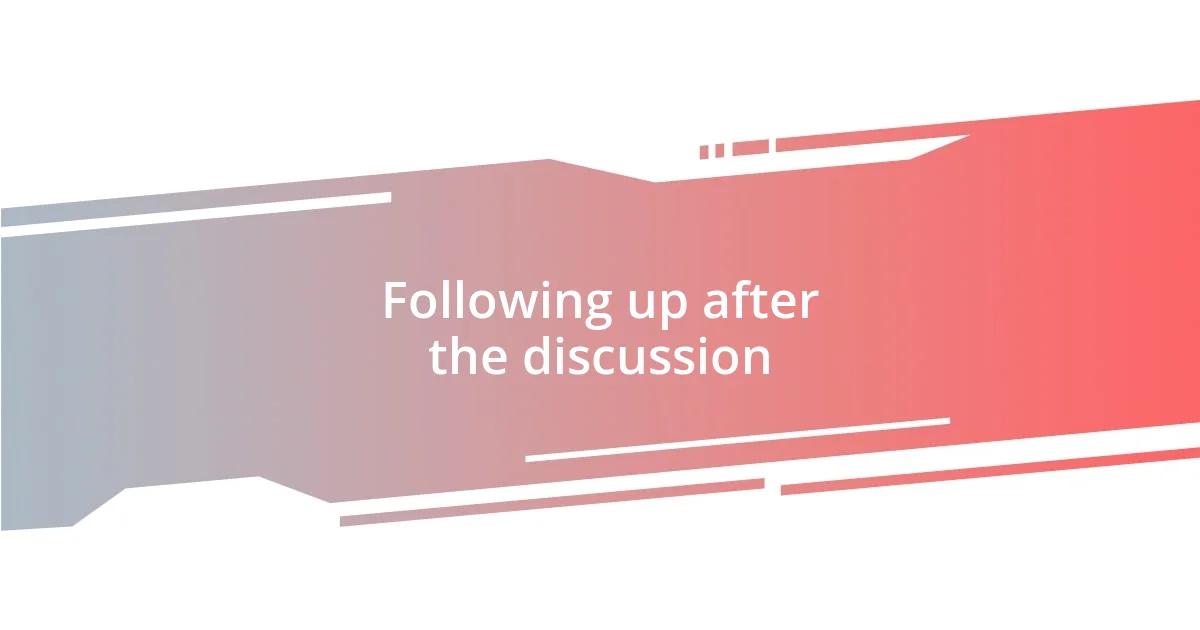
Following up after the discussion
After our initial discussion, I made it a point to revisit the topic. One day, I casually asked my sister, “How are you feeling about everything we talked about last week?” Her eyes lit up, revealing a mix of relief and lingering concern. This simple follow-up opened up a richer dialogue, allowing us to explore her thoughts and feelings further. I’ve found that these check-ins can diminish the emotional distance that sometimes creeps in after tough conversations, don’t you think?
I also discovered that following up isn’t just about their feelings; it’s about checking in with myself too. Reflecting on how I felt after our discussions has been enlightening. I recall one particularly difficult evening where I felt drained and unsure. By acknowledging my own emotions, I was better equipped to foster future conversations. How often do we forget to check in on our own feelings while supporting others?
Lastly, I like to create opportunities for ongoing dialogue beyond the initial conversation. I’ve started to share articles or resources related to my diagnosis with my family as a gentle nudge. It’s interesting to see how they respond—sometimes with supportive questions, other times with their own insights. This ongoing exchange creates a shared journey rather than a one-off discussion, enriching our connection along the way. Have you considered how sharing knowledge can transform your relationship with your loved ones?

